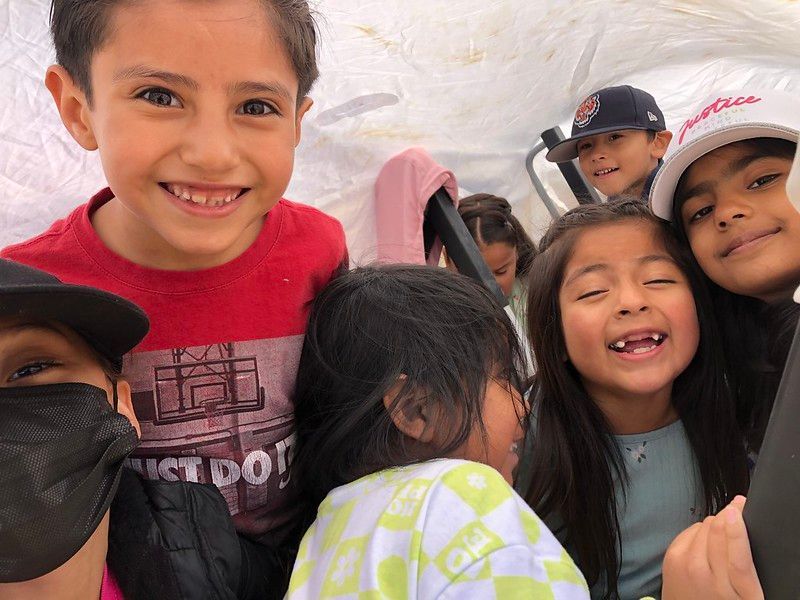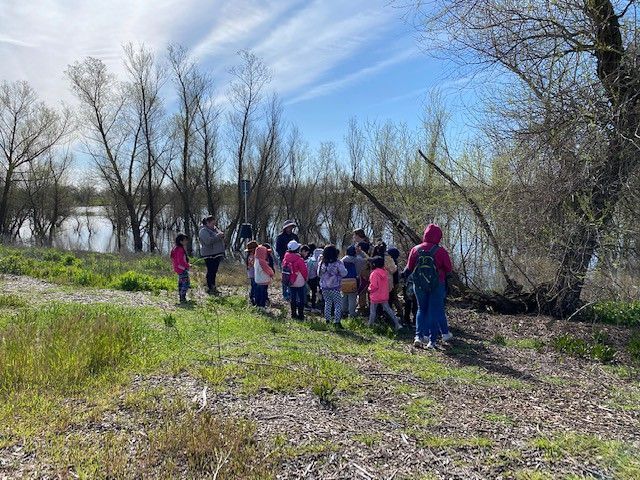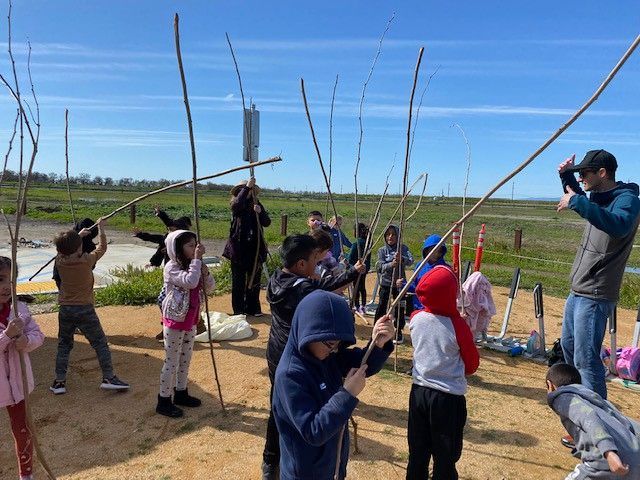Prairie Elementary 1st Graders Visit WRPP

Have you ever seen a 1st grader with a pair of binoculars? When 2 of Woodland Prairie Elementary’s 1st grade classrooms came to join us at the Woodland Regional Park Preserve on March 24th, they were provided with a pair of binoculars to use during their adventure and the reaction was phenomenal. Students were given instructions on how to handle their binoculars and adjust them so they could see clearly. They were then given some time for free exploration, using binoculars to view the wildlife around the preserve before setting off to discover all about ecosystems.
Students were so excited to see anything and everything possible and the critters that inhabit the preserve did not disappoint! Spring time is a time of renewal and birth, so many birds at the preserve are preparing nests and laying eggs. A mating pair of Canada geese have formed a nest near one of the islands in the pond, which students were able to spot despite the distance and without getting wet- thanks to their handy binoculars! We stopped for a moment along the trail and observed the geese swimming in the pond, along with several other birds including a gorgeous Anna’s Hummingbird that likes to inhabit one of the trees on the pond’s perimeter.
As our group traveled around the bend in the trail, we came upon the Red-Tailed Hawk’s large nest. Normally our resident Red-Tailed Hawk, annoyed when there is human company in her preserve, will take flight to a tree some distance away, waiting for us to leave. But not this time! This beautiful bird circled her nest and us, squawking loudly. We didn’t stay long, careful not to upset her, but we did get to engage in a conversation about why she might be so protective all the sudden.
“Does she have babies up there?” one little girl asks.
“Well, that’s a great idea,” I respond. “But do you hear tiny chirps like little baby birds?”
We all listen, observing quietly. No chirps, just her protective cries. “She has eggs!” several students shout at once. And yes, we all conclude, based on our observations, she might have eggs in that nest.
Just past the hawk’s nest is where we make our first official stop as part of our education trail. Our objective is to discover what an ecosystem is, so we set out to observe several different habitats in the preserve. The first habitat is a living tree. Students use their binoculars to make observations about everything they notice about the habitat. Who lives there? Is the top of the tree inhabited by different critters than the bottom? Are there plants as well as animals? We record our observations in a class book and talk about the definition of a habitat. Then we talk about all those living creatures that inhabit the habitat and discover that they form a community.

Next, we move to a tree that died some time ago. Is the dead tree a habitat? Will we find a community of living things here, just as we found at the living tree? Carefully, students lift up decomposing logs and shriek with delight when they discover a whole host of creepy, crawly things including large beetles and sowbugs, ants, and even a centipede! It appears that the dead tree is a habitat, home to a large community of small, living creatures. We record more notes and finally discuss the question we’ve really been after- what is an ecosystem? After some questions and discussion, we conclude that an ecosystem is a habitat with a community, all working together. The first graders, delighted with their work but now very aware that their stomachs are grumbling, head back to the Kiosk area to join the other class for lunch.
After lunch, the 2 classes switch groups, and each gets to engage in the other adventure. The second adventure scheduled for this day is the Sun Trail. During the Sun Trail, students make observations and run simple experiments to discover the effects of the sun on the living parts of the preserve. They observe what it feels like to stand in the sun and the shade and how water, soil, and rocks are affected when they are left to sit in the sun for a long time. Once students conclude that sometimes it can get too hot, it’s time to make a shade shelter! Students use poles and sheets to create shade shelters (forts) that will protect them from the heat of the sun.

During both trails, observations and discussions were recorded in class books that teachers took back to the classroom to add to their class library. Students will be able to look through and read these books over and over again and remember their time at the preserve.
As students were preparing to leave, they seemed delighted by the day and all they had seen and done. A pair of binoculars and some showy critters who don’t mind a group of 40+ 6-year-olds was more powerful than any video game I’ve come across. I took a minute to chat with one of the teachers who shared with me how grateful he was for this experience. It was the first time they’d been able to plan a field trip since schools had shut down for Covid. I thought about that for a bit and then realized what that meant… as first graders, this was probably their first field trip experience ever. I know these students walked away with a powerful science lesson, but more than that, they walked away with a powerful experience in our beautiful urban preserve.
RECENT ARTICLES






